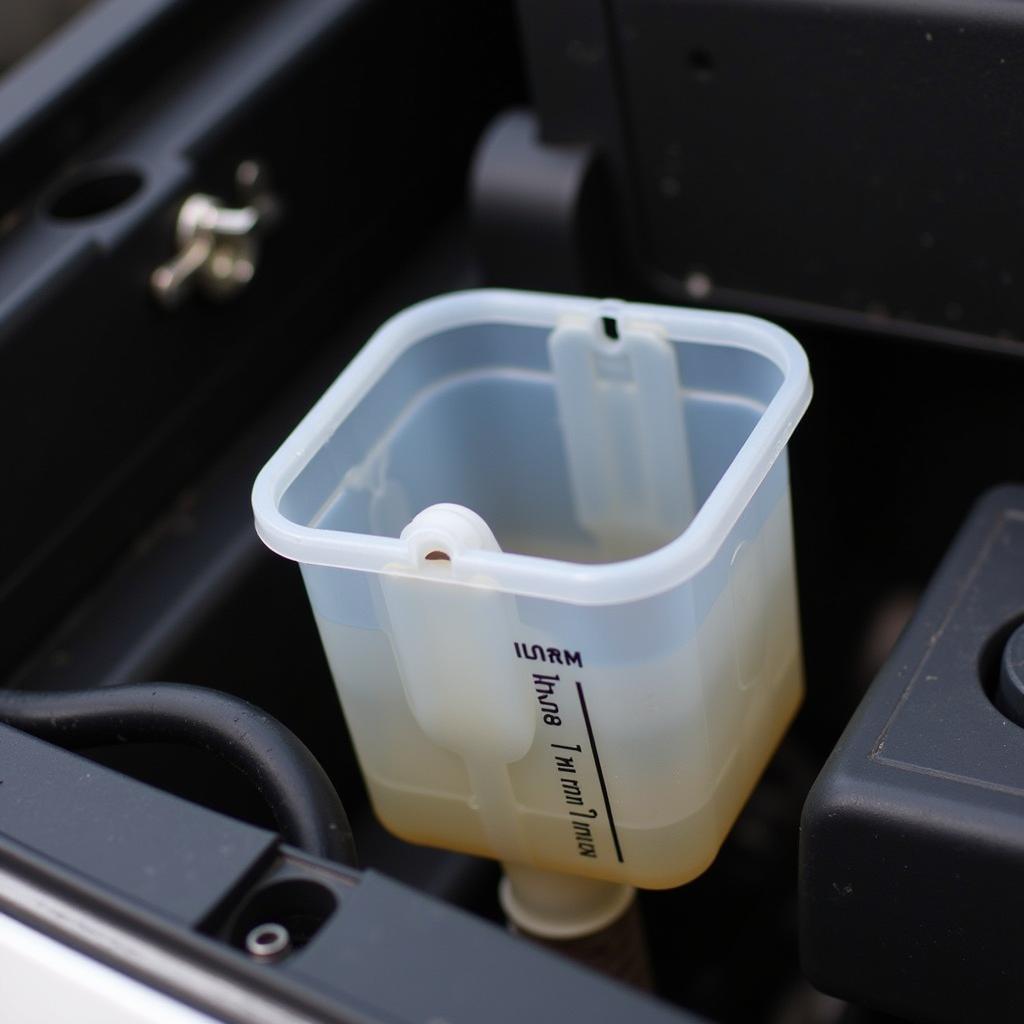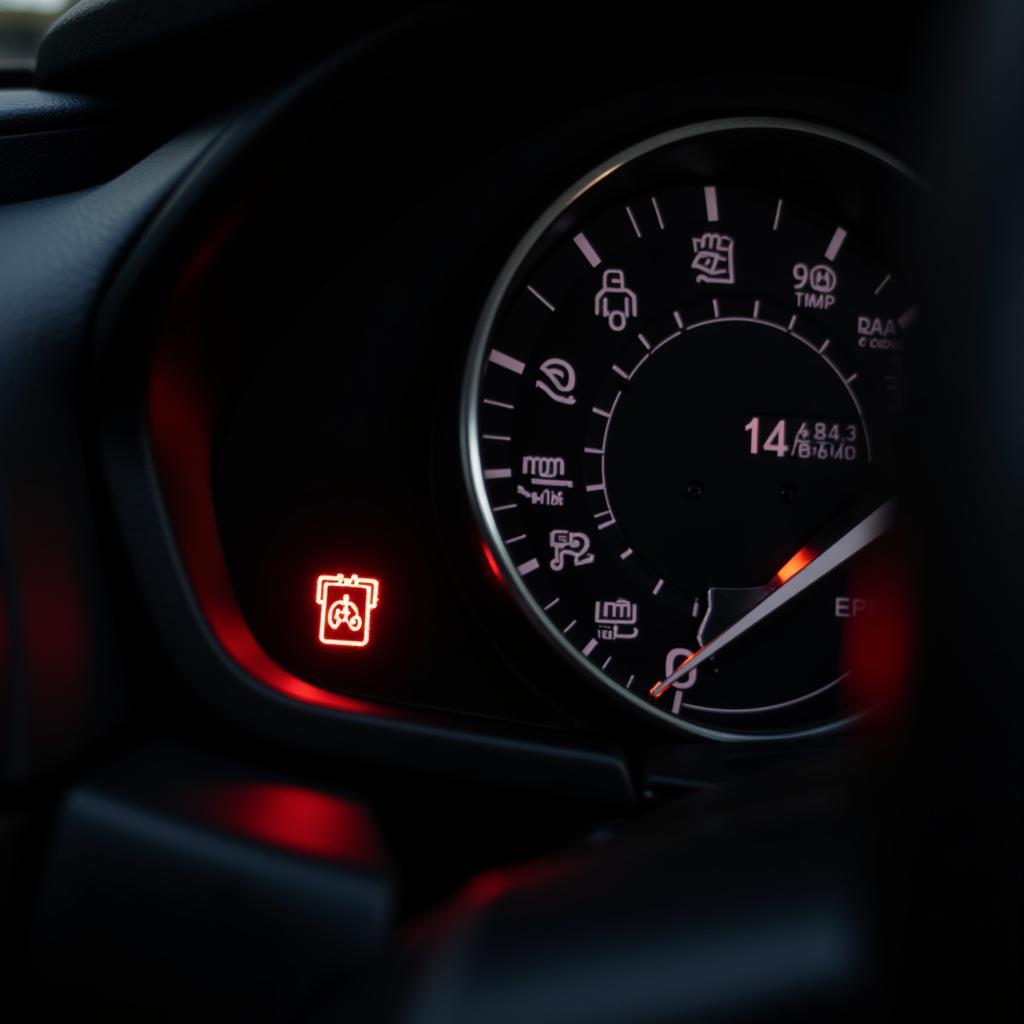The brake warning light on your Honda Civic’s dashboard is a crucial safety feature that shouldn’t be ignored. When illuminated, it signals a potential issue with your vehicle’s braking system, ranging from minor to severe. Understanding the reasons behind this warning light and knowing the appropriate actions to take can ensure your safety and potentially save you from costly repairs.
Common Causes of a Honda Civic Brake Warning Light
Several factors can trigger the brake warning light in your Honda Civic. While some causes are relatively minor and easy to address, others can indicate a serious problem requiring immediate attention. Here are some of the most common culprits:
- Low Brake Fluid: This is the most common cause of the brake warning light. The braking system relies on hydraulic pressure, and a low brake fluid level can significantly compromise braking performance.
- Worn Brake Pads: Brake pads are designed to wear down over time. When they reach a certain level of wear, a sensor triggers the warning light, indicating the need for replacement.
- Faulty Brake Caliper: The brake caliper houses the brake pads and pistons. If a caliper gets stuck or malfunctions, it can cause uneven brake pad wear or prevent the brakes from releasing properly.
- ABS Issue: If your Honda Civic is equipped with an Anti-lock Braking System (ABS), a problem with this system can also trigger the brake warning light. This could be due to a faulty sensor, pump, or control unit.
- Parking Brake Engaged: While seemingly obvious, sometimes the simplest explanation is the right one. If your parking brake is even slightly engaged, the warning light may illuminate.
 Honda Civic Brake Fluid Reservoir
Honda Civic Brake Fluid Reservoir
What to Do When the Brake Warning Light Comes On
When your Honda Civic’s brake warning light comes on, it’s essential to take the situation seriously and act promptly. Here’s a step-by-step guide:
- Safely Pull Over: As soon as it’s safe, pull your vehicle over to the side of the road and come to a complete stop.
- Check Your Parking Brake: Ensure your parking brake is fully disengaged. If it’s even partially engaged, disengage it fully.
- Inspect Brake Fluid Level: Carefully open the hood and check the brake fluid level in the reservoir. Refer to your owner’s manual for the location of the reservoir and the recommended fluid type.
- Add Brake Fluid (If Necessary): If the brake fluid level is low, carefully add the appropriate brake fluid until it reaches the “MAX” line. Avoid overfilling.
- Assess Braking Performance: If the warning light remains on, gently test your brakes while still parked. Pay attention to any unusual noises, vibrations, or a spongy brake pedal feel.
- Seek Professional Assistance: If the warning light persists or you notice any abnormalities in your brake performance, do not attempt to drive further. Contact a qualified mechanic or your nearest Honda dealership immediately for a thorough inspection and diagnosis.
Understanding the Severity of the Warning
The brake warning light’s behavior can offer clues about the severity of the issue:
- Solid Light: A continuously illuminated brake warning light typically indicates low brake fluid or worn brake pads.
- Flashing Light: A flashing light often suggests a more serious problem, such as a faulty ABS system or a critical brake system malfunction.
“A flashing brake warning light should never be ignored,” says John Bennet, a seasoned automotive engineer with over 20 years of experience in vehicle diagnostics. “It often points towards a significant issue that could compromise your ability to stop safely.”
Importance of Regular Brake Maintenance
Regular brake maintenance is crucial for ensuring optimal braking performance and safety. Adhering to the recommended maintenance schedule in your owner’s manual can help prevent many brake-related issues. This typically includes:
- Brake Fluid Flush: Brake fluid absorbs moisture over time, which can reduce its effectiveness. Most manufacturers recommend a brake fluid flush every 2 years or as specified in the maintenance schedule.
- Brake Pad Inspection: Brake pads should be inspected at least once a year or more frequently if you drive in heavy traffic or harsh conditions.
- Brake System Inspection: A comprehensive brake system inspection should be part of your regular vehicle maintenance to identify and address potential problems early on.
Addressing the Honda Civic Brake Warning Light
Ignoring the brake warning light in your Honda Civic can have serious consequences. Addressing the issue promptly not only ensures your safety but can also help prevent more costly repairs down the line.
“Remember,” advises Sarah Mitchell, a certified automotive technician specializing in Honda vehicles, “regular maintenance and timely attention to warning lights can go a long way in preventing unexpected breakdowns and ensuring the longevity of your Honda Civic’s braking system.”
Remember, a well-maintained braking system is crucial for your safety and the safety of others on the road.
FAQ
1. Can I drive my Honda Civic with the brake warning light on?
It’s highly discouraged to drive with the brake warning light on. Doing so could lead to further damage or, more importantly, a dangerous loss of braking power.
2. How much does it cost to fix a Honda Civic brake warning light issue?
The cost varies widely depending on the underlying cause. A simple brake fluid top-up might cost a few dollars, while a complete brake system repair could cost several hundred dollars.
3. How often should I check my Honda Civic’s brake fluid?
It’s a good practice to visually inspect your brake fluid level at least once a month.
4. Can I add any brake fluid to my Honda Civic?
No. Using the wrong type of brake fluid can damage your braking system. Always refer to your owner’s manual for the recommended brake fluid type.
5. How long can I drive on worn brake pads after the warning light comes on?
It’s not advisable to drive on worn brake pads after the warning light illuminates. Have your brake pads inspected and replaced as soon as possible.
6. Can a faulty battery cause the brake warning light to come on?
While uncommon, a severely depleted or faulty battery can sometimes affect the vehicle’s electrical system, potentially causing warning lights, including the brake warning light, to illuminate.
7. Is it safe to drive my Honda Civic if the brake warning light goes off after adding brake fluid?
If the warning light goes off and your brake pedal feels firm after adding brake fluid, it’s likely safe to drive. However, it’s still advisable to have your brake system inspected by a qualified mechanic to ensure there are no underlying issues.

